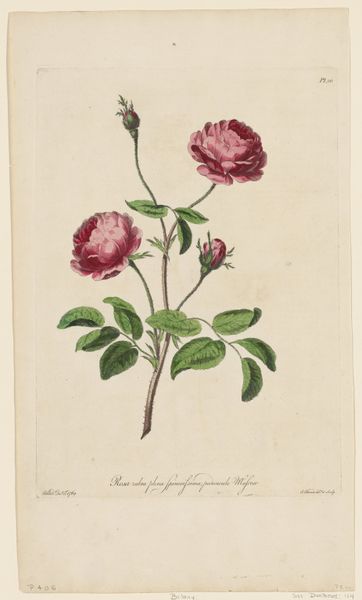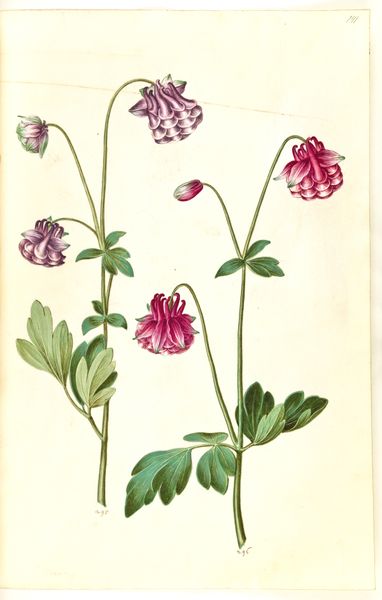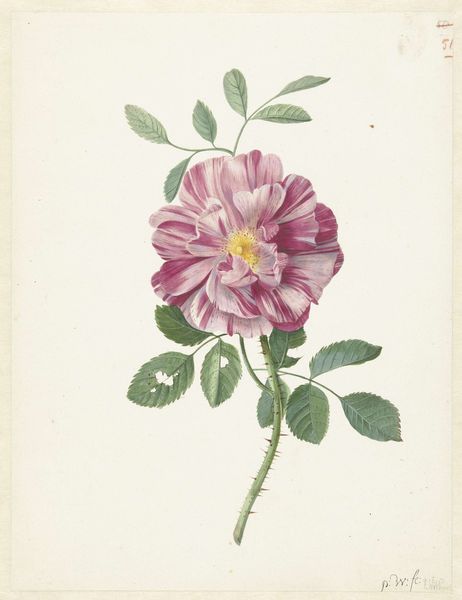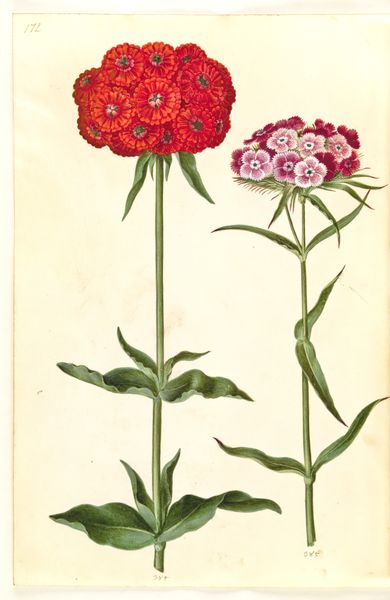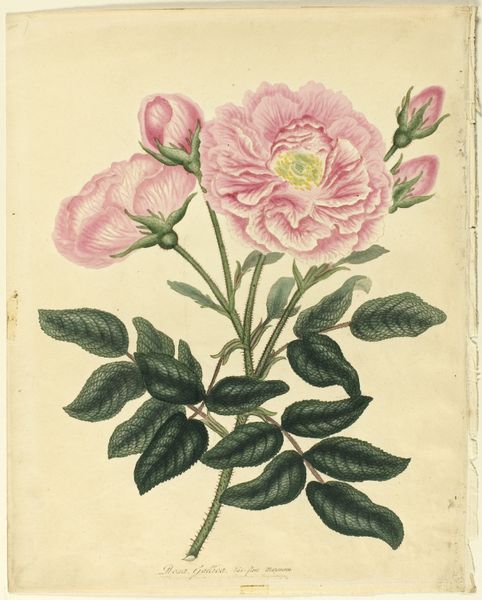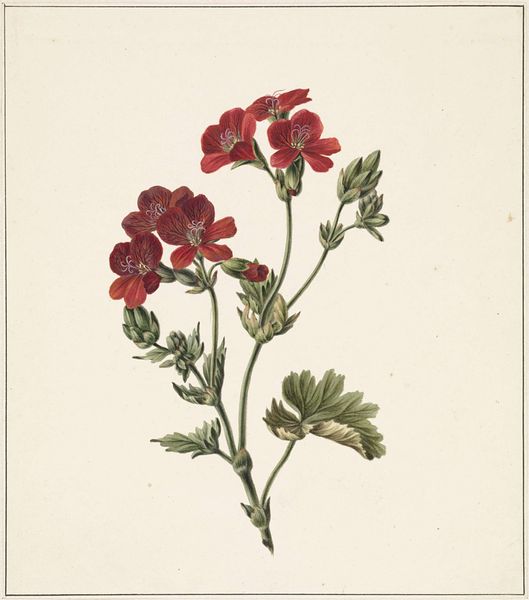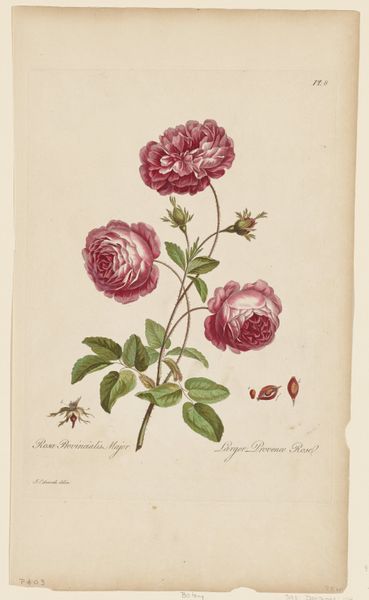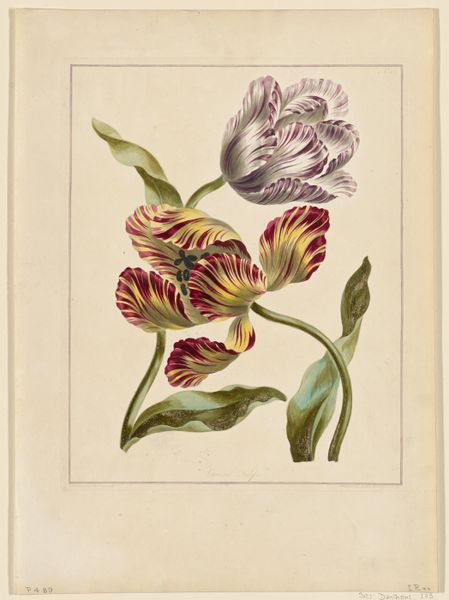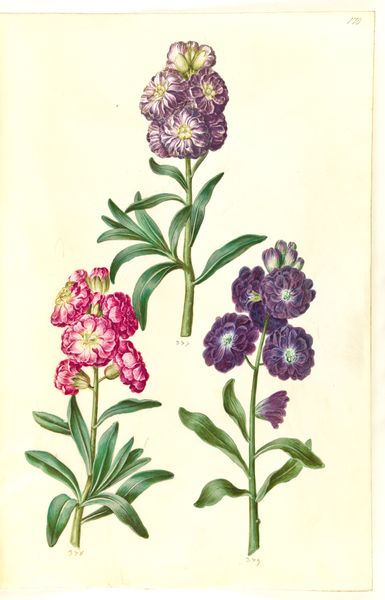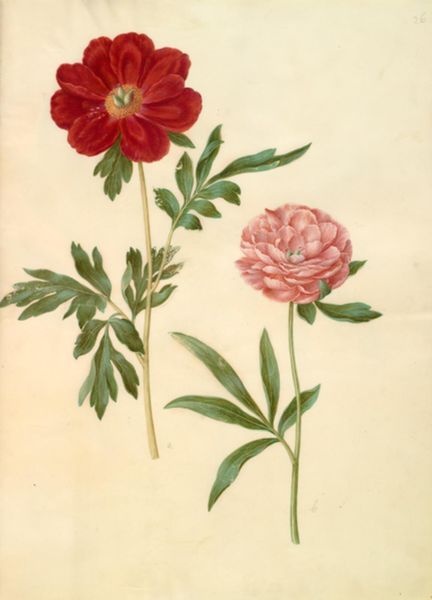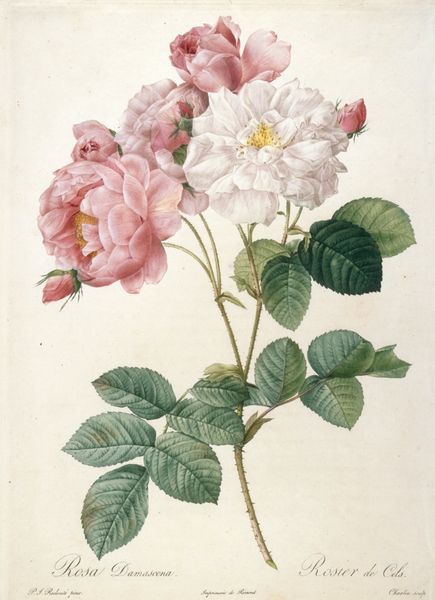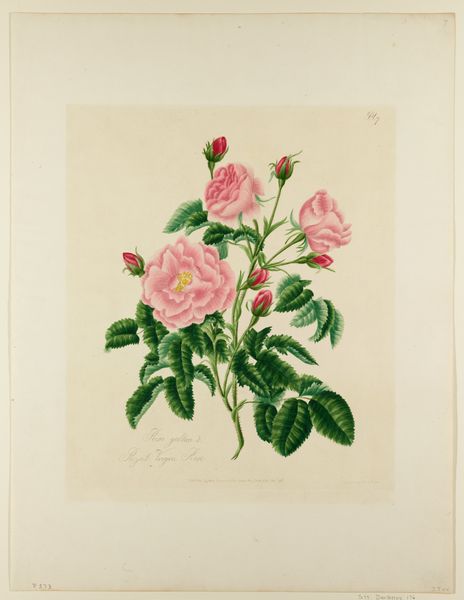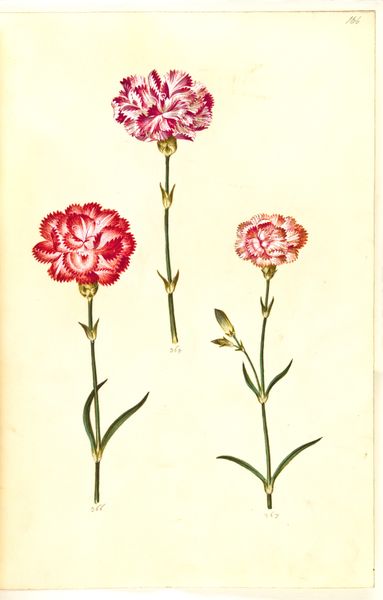
painting, print, paper, watercolor
#
painting
# print
#
paper
#
watercolor
#
botanical art
#
realism
Dimensions: 12 3/4 x 10 1/4 in. (32.39 x 26.04 cm) (plate)
Copyright: Public Domain
Editor: So this is "Double Peony," a watercolor on paper painted around 1789. The botanical realism is so striking. What grabs me is the detail – you can almost feel the texture of the petals. What are your thoughts on this piece? Curator: What I see here is a testament to the socio-economic forces driving art production. The materials, paper and watercolor, their accessibility and cost at the time, speak to the evolving market for botanical illustrations. Who was commissioning these and for what purpose? The level of realism implies a consumer valuing scientific accuracy, perhaps for study or… investment? Editor: Investment, really? In a flower painting? Curator: Consider the context: the rise of natural history as a fashionable pursuit among the European upper classes. Exotic plants were status symbols, cultivated in private gardens. Images like these become a form of consumption, documentation and bragging, wouldn’t you agree? The means by which these images were printed and distributed become crucial to its cultural life, and the paper itself would need to be considered. Where did it come from, who processed it? Editor: I guess I hadn’t thought about it that way. I was just admiring the artistry of capturing the flower so perfectly. Curator: But even "perfection" is a product of its time. This realism, while aesthetically pleasing, is also a testament to labor and technological capabilities, to what it was *possible* to produce and to *whom* that labor was beholden. Look at the layers and strokes, they indicate planning and access. These tell stories too. Editor: That’s fascinating, framing art history through material access and consumption. I never thought about a floral watercolor being tied to social status, but that definitely makes me rethink how I see art! Curator: Indeed, focusing on production reshapes how we appreciate visual pleasure, which becomes a result, not a starting point.
Comments
No comments
Be the first to comment and join the conversation on the ultimate creative platform.
